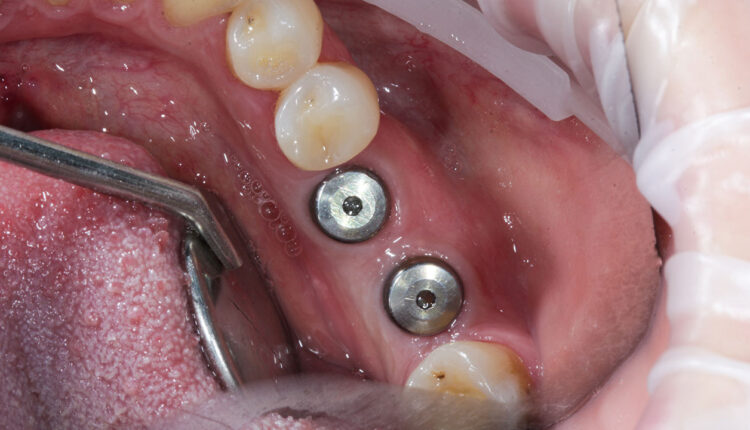
Managing Occlusal Forces for Long-Term Success
Dental implants may boast high survival rates, but without careful management of occlusion, they’re vulnerable to failure. Regular bite checks and occlusal adjustments are key to preventing complications like screw loosening, fractures, and bone loss — especially in patients who grind or clench.
Dental implant therapy enjoys long-term success with high survival rates1 However, biological and mechanical complications frequently occur. Early identification and correction of these complications can help ensure long-term survival and success of the prosthesis and implant.
Excessive occlusal forces and parafunctional habits are etiologic factors that contribute to the common mechanical complications of screw loosening and loss of screw integrity.
Functional loading of an implant is concentrated at the abutment-implant level, which also transfers to the crestal bone.2 Proper occlusion on a dental implant is critical for avoiding overloading forces. Patients with parafunctional habits (eg, bruxism) are at greater risk of occlusal overload. Excessive occlusal forces have been associated with peri-implant bone loss, prosthetic complications (eg, porcelain fracture), and fracture of the implant body.3,4
Consistent occlusal re-evaluation and periodic occlusal adjustments are necessary parts of peri-implant maintenance therapy. Numerous implant occlusal schemes have been proposed in the literature. Despite this, most clinicians would agree that light contact in maximum intercuspation (MIP) and no excursive contacts are ideal for controlling stresses placed on the implant and prosthetic components.
References
- Buser D, Sennerby L, De Bruyn H. Modern implant dentistry based on osseointegration: 50 years of progress, current trends and open questions. Periodontol 2000. 2017;73:7-21.
- Sadid-Zadeh R, Kutkut A, Kim H. Prosthetic failure in implant dentistry. Dent Clin North Am. 2015;59:195-214.
- Bertolini MM, Del Bel Cury AA, et al. Does traumatic occlusal forces lead to peri-implant bone loss? A systematic review. Braz Oral Res. 2019;33:1-11.
- Haggman-Henrikson B, Ali D, oplilAljamal M, Chrcanovic BR. Bruxism and dental implants: A systematic review and meta-analysis. J Oral Rehab. 2023;51:202-217.
This information originally appeared in Casarez-Quintana AR. Enhancing long-term success with screw-retained implants. Dimensions of Dental Hygiene. 2024;10(5):10-14.


